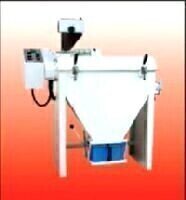Environmental Laboratory
Soil Deagglomerator
Jan 01 2000
The so-called sewage slime regulations state that, before chemical analysis, soil samples must be disagglomerated after drying into a granular size of below 2 mm. Any hard elements such as stone may therefore not be crushed, but must be separated out.
Impact crushing has proved very successful for reducing agglomerates. Equally successful is crushing by friction, where the frictional parts used are relatively soft and flexible. The “pulverisette 8†combines both sorts of crushing: in a cylindrical grinding chamber, circulating spiral plastic brushes throw the samples against the side of the
grinding chamber, the impact achieved thus crushing the agglomerate. At the same time, the bristles sweep the particles along a 2 mm perforated plate, the resulting friction produces further size reduction while the sieve effect of the perforated plate separates the particles by size. The crushed particles are collected in a container underneath the mill. At the end of the grinding line, the uncrushed stones are separated out. The “pulverisette 8†Soil Deagglomerator from Fritsch (Germany) will be particularly useful in institutes for soil research and in agricultural research and investigation organisations. Its fast working procedure makes it particularly advantageous where a large number of samples is involved. Sample preparation – i. e. size reduction of
the agglomerate and separation of stones – is performed in less that one minute. There is no need for cleaning after the completion of each sample preparation, since the “pulverisette 8†cleans itself during operation with its own brushes.
Digital Edition
AET 28.2 April/May 2024
May 2024
Business News - Teledyne Marine expands with the acquisition of Valeport - Signal partners with gas analysis experts in Korea Air Monitoring - Continuous Fine Particulate Emission Monitor...
View all digital editions
Events
Jul 30 2024 Jakarta, Indonesia
China Energy Summit & Exhibition
Jul 31 2024 Beijing, China
2024 Beijing International Coal & Mining Exhibition
Aug 07 2024 Beijing, China
IWA World Water Congress & Exhibition
Aug 11 2024 Toronto, Canada
Aug 25 2024 Stockholm, Sweden and online









.jpg)








